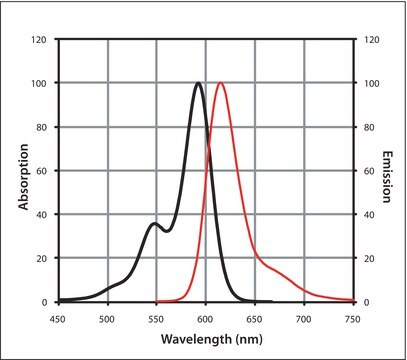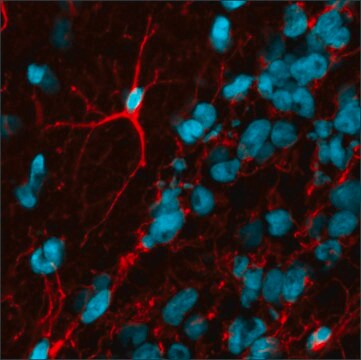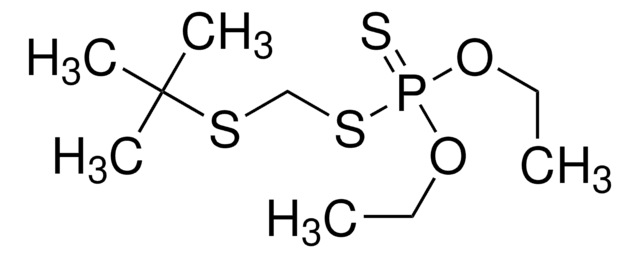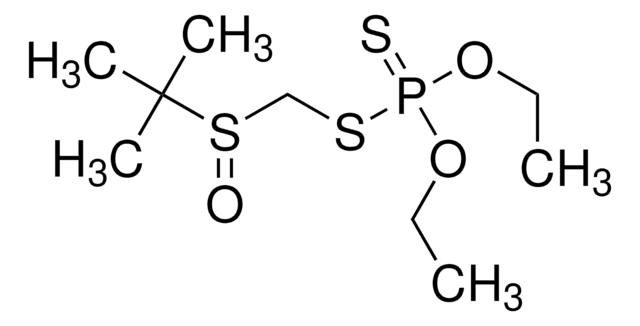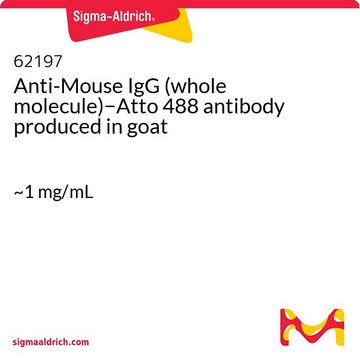Kluczowe dokumenty
36098
Anti-Rabbit IgG F(ab′)2 fragment - Atto 488, whole molecule antibody produced in goat
1 mg/mL protein
Synonim(y):
Atto 488-[F(ab′)2 fragment goat-Anti-rabbit IgG], whole molecule
About This Item
Polecane produkty
białko sprzężone
Atto 488 conjugate
forma przeciwciała
F(ab′)2 fragment of affinity isolated antibody
rodzaj przeciwciała
secondary antibodies
klon
polyclonal
zawiera
50% glycerol as stabilizer
reaktywność gatunkowa
rabbit
stężenie
1 mg/mL protein
fluorescencja
λex 500 nm; λem 522 nm in PBS
Warunki transportu
wet ice
temp. przechowywania
−20°C
docelowa modyfikacja potranslacyjna
unmodified
Opis ogólny
Immunogen
Zastosowanie
Postać fizyczna
Uwaga dotycząca przygotowania
Komentarz do analizy
Informacje prawne
Oświadczenie o zrzeczeniu się odpowiedzialności
Nie możesz znaleźć właściwego produktu?
Wypróbuj nasz Narzędzie selektora produktów.
Kod klasy składowania
10 - Combustible liquids
Klasa zagrożenia wodnego (WGK)
WGK 2
Temperatura zapłonu (°F)
Not applicable
Temperatura zapłonu (°C)
Not applicable
Środki ochrony indywidualnej
Eyeshields, Gloves
Wybierz jedną z najnowszych wersji:
Masz już ten produkt?
Dokumenty związane z niedawno zakupionymi produktami zostały zamieszczone w Bibliotece dokumentów.
Produkty
Immunoblotting (Western blot transfer) is a common technique in modern proteomics research.
Nasz zespół naukowców ma doświadczenie we wszystkich obszarach badań, w tym w naukach przyrodniczych, materiałoznawstwie, syntezie chemicznej, chromatografii, analityce i wielu innych dziedzinach.
Skontaktuj się z zespołem ds. pomocy technicznej

